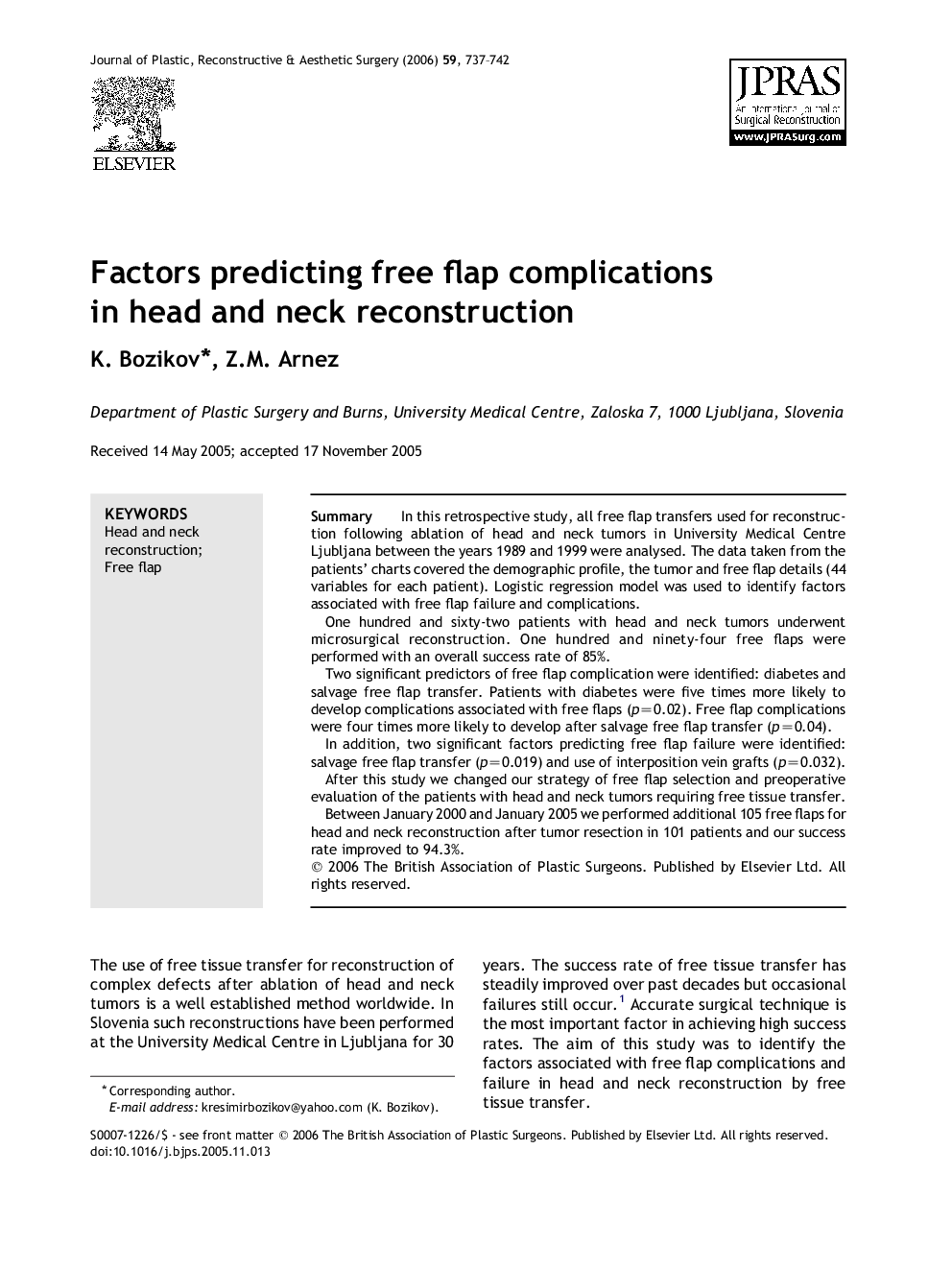| Article ID | Journal | Published Year | Pages | File Type |
|---|---|---|---|---|
| 4121779 | Journal of Plastic, Reconstructive & Aesthetic Surgery | 2006 | 6 Pages |
SummaryIn this retrospective study, all free flap transfers used for reconstruction following ablation of head and neck tumors in University Medical Centre Ljubljana between the years 1989 and 1999 were analysed. The data taken from the patients' charts covered the demographic profile, the tumor and free flap details (44 variables for each patient). Logistic regression model was used to identify factors associated with free flap failure and complications.One hundred and sixty-two patients with head and neck tumors underwent microsurgical reconstruction. One hundred and ninety-four free flaps were performed with an overall success rate of 85%.Two significant predictors of free flap complication were identified: diabetes and salvage free flap transfer. Patients with diabetes were five times more likely to develop complications associated with free flaps (p=0.02). Free flap complications were four times more likely to develop after salvage free flap transfer (p=0.04).In addition, two significant factors predicting free flap failure were identified: salvage free flap transfer (p=0.019) and use of interposition vein grafts (p=0.032).After this study we changed our strategy of free flap selection and preoperative evaluation of the patients with head and neck tumors requiring free tissue transfer.Between January 2000 and January 2005 we performed additional 105 free flaps for head and neck reconstruction after tumor resection in 101 patients and our success rate improved to 94.3%.
